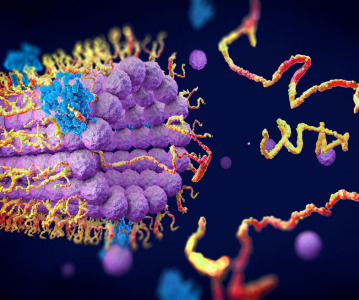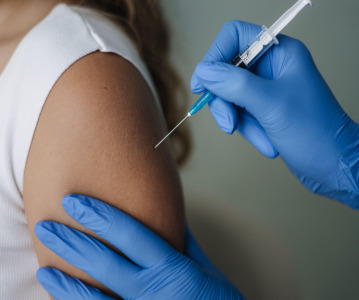Novartis drug Afinitor significantly reduces seizures in Phase III study of patients with tuberous sclerosis complex

Everolimus is the first adjunctive therapy shown in a prospective randomized Phase III study to achieve clinically significant seizure control in TSC patients.
Novartis has announced results from a Phase III study showing Afinitor (everolimus), when used as an adjunctive therapy, significantly reduced treatment-resistant seizures associated with tuberous sclerosis complex (TSC) compared to placebo. Patients in all treatment arms were also taking one to three anti-epileptic drugs (AEDs). The study, EXIST-3 (EXamining everolimus In a Study of TSC), is being presented during a plenary session at the 68th Annual Meeting of the American Academy of Neurology (AAN) (Abstract #32430, 9:00-11:00 am PST).
"Approximately 85% of individuals with TSC are affected by epilepsy at some point in their lives, yet nearly two-thirds of these patients do not achieve seizure control with available therapies, and may also experience other potentially serious consequences, such as neuropsychological, cognitive, social or learning disabilities," said Jacqueline A. French, department of neurology, NYU Langone Medical Center and lead investigator of the EXIST-3 trial. "These findings are encouraging as this is the first clinical study demonstrating benefit specifically for TSC patients who suffer from treatment-resistant seizures."
In the study, 366 patients with TSC and treatment-resistant seizures were randomized to receive targeted concentrations of everolimus titrated to Low Exposure (LE; 3-7 ng/mL; n=117) or High Exposure (HE, 9-15 ng/mL; n =130), or placebo (n=119). The percentage reduction from baseline in seizure frequency was significantly greater among patients randomized to everolimus LE (29.3%, P=0.003; confidence interval [CI]=95%) and HE (39.6%, P<0.001; CI=95%) vs placebo (14.9%; CI=95%). Seizure response rate (>=50% reduction) was also significantly greater with everolimus LE (28.2%, P=0.008; CI=95%) and HE (40.0%, P<0.001; CI=95%) vs placebo (15.1%; CI=95%). The most common (>=20%) adverse events (AEs) reported with everolimus LE/HE vs placebo included stomatitis (28.2%/30.8% vs 3.4%), mouth ulceration (23.9%/21.5% vs 4.2%), and diarrhea (17.1%/21.5% vs 5.0%). Serious AEs reported were 13.7%/13.8% vs 2.5%.
"There has been a long-standing need to find a treatment option for TSC patients that provides control of treatment-resistant seizures and we are encouraged that data from the EXIST-3 study show everolimus may have this potential," said Alessandro Riva, Global Head, Novartis Oncology Development and Medical Affairs. "Over the past decade, Novartis has remained committed to the TSC community, improving care for patients and conducting research we hope will bring us closer to addressing some of the most debilitating TSC manifestations."
Tuberous sclerosis complex is a rare genetic disorder affecting up to one million people worldwide and everolimus is the only approved non-surgical option indicated for treating non-cancerous brain and kidney tumours in certain patients with TSC. EXIST-3 study results show that everolimus is the first adjunctive therapy to achieve clinically significant seizure control in TSC patients and will be the basis for discussion with health authorities worldwide.
Everolimus works by inhibiting the mammalian target of rapamycin (mTOR), a protein that regulates multiple cellular functions. TSC is caused by mutations in the TSC1 or TSC2 genes, resulting in hyperactive signaling of the mTOR pathway which can lead to increased cellular growth and proliferation, neuronal hyper-excitability, abnormalities in cortical architecture and network function and impaired synaptic plasticity. Pre-clinical research suggests that hyperactive mTOR activity may influence several mechanisms of epileptogenesis, the gradual process by which the brain develops epilepsy.
Related News
-
News A Day in the Life of a Start-Up Founder and CEO
At CPHI we work to support Start-Up companies in the pharmaceutical industry and recognise the expertise and innovative angles they bring to the field. Through our Start-Up Programme we have gotten to know some of these leaders, and in this Day in the ... -
News Biopharmaceutical manufacturing boost part of new UK government budget
In their national budget announced by the UK Labour Party, biopharmaceutical production and manufacturing are set to receive a significant boost in capital grants through the Life Sciences Innovative Manufacturing Fund (LSIMF). -
News CPHI Podcast Series: The power of proteins in antibody drug development
In the latest episode of the CPHI Podcast Series, Lucy Chard is joined by Thomas Cornell from Abzena to discuss protein engineering for drug design and development. -
News Amgen sues Samsung biologics unit over biosimilar for bone disease
Samsung Bioepis, the biologics unit of Samsung, has been issued a lawsuit brought forth by Amgen over proposed biosimilars of Amgen’s bone drugs Prolia and Xgeva. -
News CPHI Podcast Series: Why we need to consider women in clinical trials
The latest episode of the CPHI Podcast Series with Lucy Chard covers women's health, specifically women's representation in clinical trials, the associated bias, and the impacts on health for this population. -
News US FDA does not approve MDMA therapy for PTSD, requests more data
The MDMA-based therapeutic developed by Lykos Therapeutics, a California-based Public Benefit Corporation (PBC), has been reviewed and unapproved by the US FDA. The regulator has requested additional phase III trial data for further safety and efficacy... -
News Novartis and Viatris latest facing lawsuit over HeLa cell misuse
Global pharmaceutical companies Novartis and Viatris are the latest hit with a lawsuit claim pertaining to alleged misuse of the ‘HeLa’ cell line from the estate of woman whose cancerous tissue cells were taken without consent. -
News Sanofi invests billions into Frankfurt insulin production site
French pharmaceutical company Sanofi have announced an investment of EUR1.3 billion at their existing BioCampus site in Frankfurt am Main for the expansion of insulin production.
Position your company at the heart of the global Pharma industry with a CPHI Online membership
-
Your products and solutions visible to thousands of visitors within the largest Pharma marketplace
-
Generate high-quality, engaged leads for your business, all year round
-
Promote your business as the industry’s thought-leader by hosting your reports, brochures and videos within your profile
-
Your company’s profile boosted at all participating CPHI events
-
An easy-to-use platform with a detailed dashboard showing your leads and performance



.png)

.png)
.png)
.png)